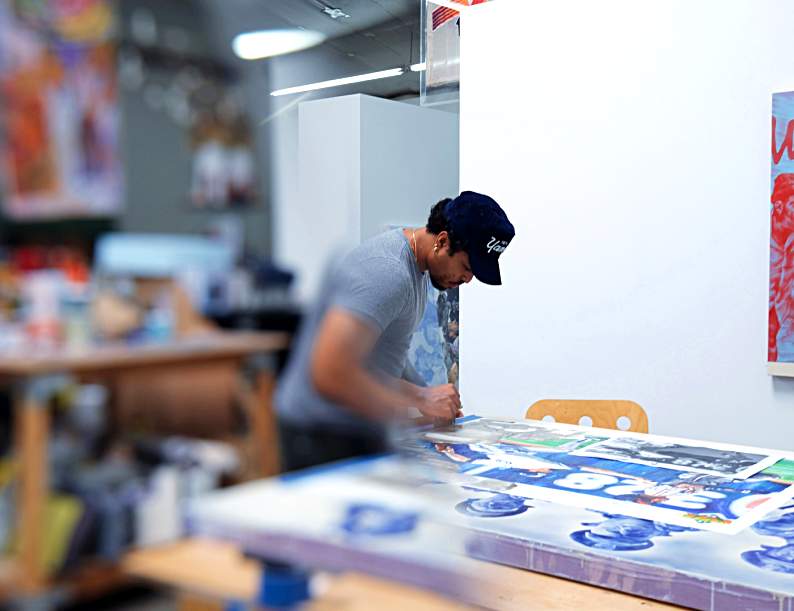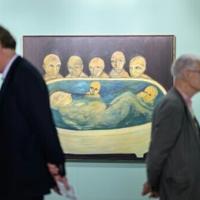words Alexa Wang
The art world has always evolved with the times, adapting to cultural shifts and new mediums. However, recent technological advancements are bringing about changes at a pace never seen before. From how art is created to how it’s shared, purchased, and valued, technology is transforming the landscape of the art market. These changes present opportunities and challenges for both artists and collectors, altering the dynamics of this centuries-old industry. Here are five ways technology is reshaping the art market and what these changes mean for those navigating this creative space.
Technology Helps You Increase Your Chance of Success in the Art Industry
For artists aiming to thrive, technology can be a powerful tool to increase your chance of success. In the past, breaking into the art market meant relying on galleries, exhibitions, and the elusive connections that could put an artist’s work in front of the right eyes. Today, digital platforms, social media, and online marketplaces have democratized access to audiences, allowing artists to share their work without the need for a gallery’s backing. These platforms enable creators to cultivate their brand, directly connect with fans, and reach collectors around the world.
Online platforms allow emerging artists to gain visibility, which was once restricted to those with the right connections. Social media, in particular, has become a gallery of its own. Artists can showcase their processes, tell stories behind their pieces, and create a more personal connection with their audience. This shift allows for greater control over one’s artistic journey and can significantly impact an artist’s success.
The Role of Tokenization in the Modern Art Market
The rise of digital assets and the concept of tokenization is impacting many industries, including art. The idea of a tokenized art piece has quickly become a game-changer, offering a new way for artists to sell and collectors to own art. Essentially, tokenization refers to creating a digital representation of an asset—like a piece of art—on a blockchain. This process can apply to physical artworks as well as digital creations, allowing ownership and authenticity to be verified on a secure ledger.
Through tokenization, artists can sell fractional ownership of their work, making art investments more accessible to a wider range of buyers. For instance, instead of purchasing a whole painting, a collector could own a share of a tokenized artwork, similar to owning shares in a company. This approach democratizes the investment process, allowing people with even the smallest of budgets to participate in the art market. It also opens up new revenue streams for artists, as they can earn royalties each time a tokenized piece changes hands.
Virtual and Augmented Reality Are Changing the Art Experience
Virtual reality (VR) and augmented reality (AR) are taking art beyond the confines of physical space. This offers new ways for artists to express themselves and for audiences to engage with their work. Traditionally, viewing art meant visiting galleries and museums, but with VR and AR, the art experience can be brought into homes and spaces across the world.
VR allows users to enter immersive worlds crafted by artists, experiencing art in three dimensions and sometimes even interacting with it. This opens up possibilities for large-scale installations and virtual exhibitions that would be impossible to recreate in a traditional gallery. Meanwhile, AR offers a way for viewers to visualize how an artwork might look in their own space—whether that’s a painting, sculpture, or digital piece—before they commit to a purchase.
NFTs Are Transforming the Market for Digital Art
The emergence of NFTs (non-fungible tokens) has been one of the most talked-about shifts in the art market recently. NFTs allow digital artworks to be bought and sold like physical pieces, making them unique and collectible. For digital artists, this technology has opened up a new marketplace where their work can be authenticated, sold, and traded as unique assets on the blockchain.
Unlike traditional art markets, which are often limited by physical boundaries, NFTs make it possible to trade digital art globally. This allows artists to reach collectors from all corners of the world, and buyers can purchase pieces that are stored securely in their digital wallets. NFTs also introduce a new way for artists to earn from their creations—through smart contracts that enable them to receive royalties each time their artwork is resold.
Online Marketplaces and Social Platforms Are Redefining Art Sales
The internet has radically transformed the way art is bought and sold, making it easier for artists to connect with buyers and for collectors to find new pieces. Online marketplaces provide a direct channel for artists to reach a global audience without the need for an intermediary like a gallery or agent. This shift not only reduces costs for artists but also allows them to retain greater control over their pricing and branding.
Social media platforms are also essential for promoting and selling art, allowing artists to build their brands and cultivate a following. These platforms serve as both a portfolio and a sales channel, where artists can engage directly with fans and collectors.
This post was originally published on this site be sure to check out more of their content






